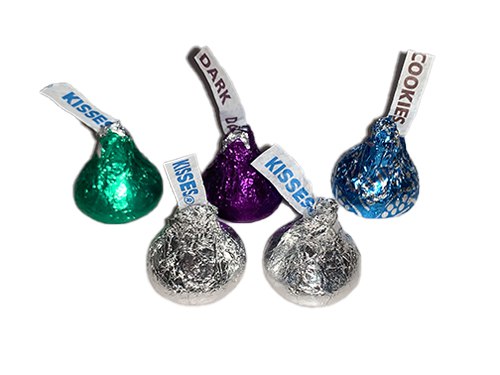VY
Size: a a a
2021 November 17
А россия меня вообще пугает своими приколами и верой в фин пирамиды
KM
Зачем вот эти пафосные фразы про опыт? Хорошо что у тебя такой. Вот с тобой вроде и хочется подискутировать но когда читаешь про глубокий опыт и категоричность - уже не хочется вести споры
VY
И даже в 60 еще есть силы
VY
Щас статейку найду одну
KM
Я смог - все кто не смог как я имбицилы. Ок. Давайте может перестреляем людей без вышки? Они ж мозг не приложили
MM
ты ж апеллируешь к тому, что я в айти и тут как сыр в масле) Я тебе написал, что кроме айти у меня было разного опыта и я знаю что такое и физический труд и мозговой. И вопрос не в сфере
MM
Переслано от Kateryna Mostova
Ты себя так классно чувствуешь. Потому что в отрасли в которой зп выше. Если б во всех отраслях были аналогичные зп - цены на все были бы другие
VY
Thirty years ago, 16 little old ladies took the investment world by storm.
Aged 41 to 87, the women hailed from a small agricultural town 200 miles south of Chicago. They were retirees, teachers, homemakers, and hog farmers. Before their rise to fame, many of them had never picked up a copy of The Wall Street Journal.
Yet, during the bull market of the 1980s, they reportedly turned a few hundred dollars into six figures, outperforming even veteran bankers.
Dubbed the “Beardstown Ladies,” they pumped out best-selling investment books, embarked on multi-state speaking tours, and made the rounds on primetime TV.
It was the perfect story about a group of underdogs who used common sense, intuition, and Midwestern grit to beat the market.
That is, until it all came tumbling down.
The formation of the Beardstown Ladies
In the early 1980s, Betty Sinnock — then a bank teller in Beardstown (population 6k) — developed an interest in the booming stock market.
She’d seen customer after customer drop off big dividend checks and she couldn’t help but wonder: If these people can make money on stocks, why can’t I?
But there was a problem.
To buy stocks, she needed a broker. And as Sinnock later told a local paper, brokers “didn’t want to deal with an old lady.”
When her calls went unanswered, she decided to start her own investment club.
She banded together with Shirley Gross — a retired medical technologist in her 70s who’d also had trouble finding investing resources — and put out a call for other local women who wanted to take control of their finances.
On November 3, 1983, they officially formed the Beardstown Business and Professional Women’s Investment Club — or the “Beardstown Ladies” for short.
The 16 Beardstown Ladies (via “The Beardstown Ladies' Common-Sense Investment Guide”; Hyperion, 1995)
Eventually, the group settled on 16 members — all women, many of whom were working-class retirees:
• Hazel Lindahl, 87; retired school nurse
• Sylvia Gaushell, 82; retired art teacher
• Helen Kramer, 78; retired bank officer
• Lillian Ellis, 77; retired dental assistant
• Shirley Gross, 77; retired medical technologist
• Elsie Scheer, 76; retired farmer
• Ruth Juston, 75; dry cleaning business owner
• Maxine Thomas, 73; retired bank teller
• Doris Edwards, 72; elementary school principal
• Carnell Korsmeyer, 67; hog farm owner
• Ann Corley, 66; retired homemaker
• Betty Sinnock; 62; bank trust officer
• Ann Brewer, 60; secretary
• Margaret Houchins, 53; flower shop owner
• Carol McCombs, 44; insurance agency employee
• Buffy Tillitt-Pratt, 41; real estate broker
Most of the club members didn’t know how to read annual reports or analyze price-to-earnings ratios.
But the group boasted no shortage of life experience: Among them, they had 30 children, 40 grandchildren, and 7 great-grandchildren. They’d lived through wars and depressions. They could slaughter pigs and fix broken engines.
How hard could trading stocks be?
A news clip from the early ‘90s (via newspapers.com)
To start, each woman ponied up $100, plus $25 per month in dues.
Every Thursday evening, they convened to learn about the market and discuss which stocks they’d buy with their pooled funds. Each woman would follow a particular stock, then report her findings to the group.
The club’s process for identifying good stocks was a mixture of intuition, research, and “good old-fashioned leg work.”
As self-proclaimed “fundamentalists” (or value investors), they gravitated toward stocks they felt were underestimated by the market. They’d call up CEOs and pore over publications from the investment research firm Value Line, selecting stocks that fit several criteria:
1 The stock price had to be under $25 per share
2 The stock had to have at least 5 years of solid growth
3 The company had to be in one of the 25 largest industries
4 The company had to have debts less than ⅓ of its assets
5 The company had to have a strong track record of leadership
6 No vice stocks (tobacco, liquor, gambling)
But their analysis went beyond the numbers.
Aged 41 to 87, the women hailed from a small agricultural town 200 miles south of Chicago. They were retirees, teachers, homemakers, and hog farmers. Before their rise to fame, many of them had never picked up a copy of The Wall Street Journal.
Yet, during the bull market of the 1980s, they reportedly turned a few hundred dollars into six figures, outperforming even veteran bankers.
Dubbed the “Beardstown Ladies,” they pumped out best-selling investment books, embarked on multi-state speaking tours, and made the rounds on primetime TV.
It was the perfect story about a group of underdogs who used common sense, intuition, and Midwestern grit to beat the market.
That is, until it all came tumbling down.
The formation of the Beardstown Ladies
In the early 1980s, Betty Sinnock — then a bank teller in Beardstown (population 6k) — developed an interest in the booming stock market.
She’d seen customer after customer drop off big dividend checks and she couldn’t help but wonder: If these people can make money on stocks, why can’t I?
But there was a problem.
To buy stocks, she needed a broker. And as Sinnock later told a local paper, brokers “didn’t want to deal with an old lady.”
When her calls went unanswered, she decided to start her own investment club.
She banded together with Shirley Gross — a retired medical technologist in her 70s who’d also had trouble finding investing resources — and put out a call for other local women who wanted to take control of their finances.
On November 3, 1983, they officially formed the Beardstown Business and Professional Women’s Investment Club — or the “Beardstown Ladies” for short.
The 16 Beardstown Ladies (via “The Beardstown Ladies' Common-Sense Investment Guide”; Hyperion, 1995)
Eventually, the group settled on 16 members — all women, many of whom were working-class retirees:
• Hazel Lindahl, 87; retired school nurse
• Sylvia Gaushell, 82; retired art teacher
• Helen Kramer, 78; retired bank officer
• Lillian Ellis, 77; retired dental assistant
• Shirley Gross, 77; retired medical technologist
• Elsie Scheer, 76; retired farmer
• Ruth Juston, 75; dry cleaning business owner
• Maxine Thomas, 73; retired bank teller
• Doris Edwards, 72; elementary school principal
• Carnell Korsmeyer, 67; hog farm owner
• Ann Corley, 66; retired homemaker
• Betty Sinnock; 62; bank trust officer
• Ann Brewer, 60; secretary
• Margaret Houchins, 53; flower shop owner
• Carol McCombs, 44; insurance agency employee
• Buffy Tillitt-Pratt, 41; real estate broker
Most of the club members didn’t know how to read annual reports or analyze price-to-earnings ratios.
But the group boasted no shortage of life experience: Among them, they had 30 children, 40 grandchildren, and 7 great-grandchildren. They’d lived through wars and depressions. They could slaughter pigs and fix broken engines.
How hard could trading stocks be?
A news clip from the early ‘90s (via newspapers.com)
To start, each woman ponied up $100, plus $25 per month in dues.
Every Thursday evening, they convened to learn about the market and discuss which stocks they’d buy with their pooled funds. Each woman would follow a particular stock, then report her findings to the group.
The club’s process for identifying good stocks was a mixture of intuition, research, and “good old-fashioned leg work.”
As self-proclaimed “fundamentalists” (or value investors), they gravitated toward stocks they felt were underestimated by the market. They’d call up CEOs and pore over publications from the investment research firm Value Line, selecting stocks that fit several criteria:
1 The stock price had to be under $25 per share
2 The stock had to have at least 5 years of solid growth
3 The company had to be in one of the 25 largest industries
4 The company had to have debts less than ⅓ of its assets
5 The company had to have a strong track record of leadership
6 No vice stocks (tobacco, liquor, gambling)
But their analysis went beyond the numbers.
VY
Sometimes, they’d just pick what felt right, based on observation.
They bought into the shoemaker Wolverine Worldwide because they simply liked the durability of the company’s boots. Hershey’s was selected because the Ladies saw promise in Kiss chocolates.
In one instance, a Wall Street VP told the Beardstown Ladies they were foolish for holding Walmart stock.
“Every time I go there, it’s packed with people,” club member Shirley Gross retorted. “Have you ever been inside a Walmart?”
He hadn’t.
The Beardstown Ladies’ stock picks from 1994 included classics like McDonald’s, Home Depot, and Quaker Oats (data via “The Beardstown Ladies' Common-Sense Investment Guide”; Hyperion, 1995; graphic: The Hustle)
Above all else, though, the Beardstown Ladies remembered to have a good time. They started meetings with poems, kept things lively, and dined on Doritos and Pepsi while breaking down the earnings yield of Cracker Barrel.
Over 10 years, the Beardstown Ladies made a series of prudent investments, reinvesting profits back into the market and buying the dips.
And by the early ‘90s, the club had reportedly turned its $1.6k initial investment into more than $80k.
The National Association of Investment Clubs (NAIC) awarded the Beardstown Ladies an “all-star” rating — its top honor — 5 years in a row.
And for the media, the story of market-beating grandmas from Middle America was too good to pass up.
The rise of fame
In 1991, CBS This Morning caught wind of the Beardstown Ladies’ success and featured the club in a segment.
Though the club hadn’t tracked its returns, CBS pushed for a number. The reported verdict: From 1983 to 1994, the Beardstown Ladies had seen an average annual investment return of 23.4%, more than double that of the S&P 500 over the same period.
The story went viral and the group parlayed its new fame into a book (“The Beardstown Ladies' Common-Sense Investment Guide”) that marketed them as ''the greatest investment minds of our generation.''
The plain-spoken group of women and their ‘if we can do it, you can too’ attitude captivated aspirational Americans, and the book spent 3 months on The New York Times Best Seller list.
The Beardstown Ladies became a press darling following the publication of their book (via assorted newspapers; newspapers.com)
In short order, the Beardstown Ladies became national celebrities and investment “experts.”
One newspaper column proclaimed the Beardstown Ladies to be “one of the most successful, prolific, and high-profile investment clubs around… [earning] the kind of returns even Warren Buffett might drool over.”
The National Enquirer dubbed them “Wizards of Wall Street.”
The women hit the road on speaking tours, imparting stock wisdom to packed auditoriums. They produced a videotape titled, “Cookin’ Up Profits on Wall Street.” They rolled out 4 subsequent books, blending investment advice and pie recipes.
“We’re riding a wave and we want to stay on it as long as we can because it will come down,” one of the Ladies told the Des Moines Register.
It would come down sooner — and harder — than expected.
Too good to be true
Shortly after the publication of their book, the Beardstown Ladies’ purported returns began to draw some skepticism.
Kevin Pilot, a former Merrill Lynch broker, dug into the numbers and found that there was no way the stocks they’d picked had yielded the returns they’d claimed.
As more reports followed, the Beardstown Ladies hired PwC to run an independent audit of their ledger.
The result was sobering: The club’s actual return was a measly 9.1%, which underperformed the S&P 500 (14.9%) by a considerable margin.
A flood of negative press followed the revelation of the Beardstown Ladies’ gaffe (via assorted newspapers; newspapers.com)
The media — which had built the Beardstown Ladies up — was quick to tear them right back down.
“I think a monkey following a strict trading regimen with darts as a selection vehicle could beat the Bearstown Ladies’ butt,” wrote The Motley Fool. “They are cheats and liars who basked shamelessly in false fame.”
They bought into the shoemaker Wolverine Worldwide because they simply liked the durability of the company’s boots. Hershey’s was selected because the Ladies saw promise in Kiss chocolates.
In one instance, a Wall Street VP told the Beardstown Ladies they were foolish for holding Walmart stock.
“Every time I go there, it’s packed with people,” club member Shirley Gross retorted. “Have you ever been inside a Walmart?”
He hadn’t.
The Beardstown Ladies’ stock picks from 1994 included classics like McDonald’s, Home Depot, and Quaker Oats (data via “The Beardstown Ladies' Common-Sense Investment Guide”; Hyperion, 1995; graphic: The Hustle)
Above all else, though, the Beardstown Ladies remembered to have a good time. They started meetings with poems, kept things lively, and dined on Doritos and Pepsi while breaking down the earnings yield of Cracker Barrel.
Over 10 years, the Beardstown Ladies made a series of prudent investments, reinvesting profits back into the market and buying the dips.
And by the early ‘90s, the club had reportedly turned its $1.6k initial investment into more than $80k.
The National Association of Investment Clubs (NAIC) awarded the Beardstown Ladies an “all-star” rating — its top honor — 5 years in a row.
And for the media, the story of market-beating grandmas from Middle America was too good to pass up.
The rise of fame
In 1991, CBS This Morning caught wind of the Beardstown Ladies’ success and featured the club in a segment.
Though the club hadn’t tracked its returns, CBS pushed for a number. The reported verdict: From 1983 to 1994, the Beardstown Ladies had seen an average annual investment return of 23.4%, more than double that of the S&P 500 over the same period.
The story went viral and the group parlayed its new fame into a book (“The Beardstown Ladies' Common-Sense Investment Guide”) that marketed them as ''the greatest investment minds of our generation.''
The plain-spoken group of women and their ‘if we can do it, you can too’ attitude captivated aspirational Americans, and the book spent 3 months on The New York Times Best Seller list.
The Beardstown Ladies became a press darling following the publication of their book (via assorted newspapers; newspapers.com)
In short order, the Beardstown Ladies became national celebrities and investment “experts.”
One newspaper column proclaimed the Beardstown Ladies to be “one of the most successful, prolific, and high-profile investment clubs around… [earning] the kind of returns even Warren Buffett might drool over.”
The National Enquirer dubbed them “Wizards of Wall Street.”
The women hit the road on speaking tours, imparting stock wisdom to packed auditoriums. They produced a videotape titled, “Cookin’ Up Profits on Wall Street.” They rolled out 4 subsequent books, blending investment advice and pie recipes.
“We’re riding a wave and we want to stay on it as long as we can because it will come down,” one of the Ladies told the Des Moines Register.
It would come down sooner — and harder — than expected.
Too good to be true
Shortly after the publication of their book, the Beardstown Ladies’ purported returns began to draw some skepticism.
Kevin Pilot, a former Merrill Lynch broker, dug into the numbers and found that there was no way the stocks they’d picked had yielded the returns they’d claimed.
As more reports followed, the Beardstown Ladies hired PwC to run an independent audit of their ledger.
The result was sobering: The club’s actual return was a measly 9.1%, which underperformed the S&P 500 (14.9%) by a considerable margin.
A flood of negative press followed the revelation of the Beardstown Ladies’ gaffe (via assorted newspapers; newspapers.com)
The media — which had built the Beardstown Ladies up — was quick to tear them right back down.
“I think a monkey following a strict trading regimen with darts as a selection vehicle could beat the Bearstown Ladies’ butt,” wrote The Motley Fool. “They are cheats and liars who basked shamelessly in false fame.”
VY
Amidst a wave of scalding press, Sinnock, the group’s treasurer, attributed the error to entering data incorrectly into a computer program designed to track investments. When calculating returns, they’d included revenue from the sale of their video.
The club’s publisher, Hyperion, was later sued over the Beardstown Ladies’ false claims and had to pay out an estimated $17m in refund credits and legal fees.
But the consensus among Americans was that the women had simply made a mistake.
Though their credibility had been marred, they were soon forgiven — largely because they’d succeeded in starting a larger movement:
• Between 1983 (the year the group formed) and 1997, the number of national investment clubs rose from 7k to 28k, largely due to an influx of female investors.
• By 1997, 47% of all American women were investing in stocks, compared to 44% of men.
They made the mysteries of Wall Street accessible to the public, especially for women, who’d previously been a marginalized group in finance.
And the club still exists
Today, the Beardstown Ladies club still meets to select and discuss stocks.
While most of the original members have since passed away, many of their descendants now sit in their place, keeping the legacy alive.
A group photo of the Beardstown Ladies, shot for People Magazine in 2000 (Photo by Michael L Abramson/Getty Images)
These days, they’re a little more tight-lipped about their returns. But at last count, the club’s portfolio was worth $500k+.
Their investments now include the likes of Amazon, Facebook, and Apple, alongside the staid classics.
While the days of big press, book deals, and public drama may be gone, the spirit of the group remains intact.
“We’ve been through a lot of ups and downs,” Tillitt-Pratt, an original member, said in 2017. “And when [the market] goes down, we don’t get sad. We look for bargains.”
The club’s publisher, Hyperion, was later sued over the Beardstown Ladies’ false claims and had to pay out an estimated $17m in refund credits and legal fees.
But the consensus among Americans was that the women had simply made a mistake.
Though their credibility had been marred, they were soon forgiven — largely because they’d succeeded in starting a larger movement:
• Between 1983 (the year the group formed) and 1997, the number of national investment clubs rose from 7k to 28k, largely due to an influx of female investors.
• By 1997, 47% of all American women were investing in stocks, compared to 44% of men.
They made the mysteries of Wall Street accessible to the public, especially for women, who’d previously been a marginalized group in finance.
And the club still exists
Today, the Beardstown Ladies club still meets to select and discuss stocks.
While most of the original members have since passed away, many of their descendants now sit in their place, keeping the legacy alive.
A group photo of the Beardstown Ladies, shot for People Magazine in 2000 (Photo by Michael L Abramson/Getty Images)
These days, they’re a little more tight-lipped about their returns. But at last count, the club’s portfolio was worth $500k+.
Their investments now include the likes of Amazon, Facebook, and Apple, alongside the staid classics.
While the days of big press, book deals, and public drama may be gone, the spirit of the group remains intact.
“We’ve been through a lot of ups and downs,” Tillitt-Pratt, an original member, said in 2017. “And when [the market] goes down, we don’t get sad. We look for bargains.”
MM
вышка говно
MM
у меня логика простая. На момент 92 года все кому было 30 и младше не могут ни на что пиздеть
MM
что типа ДЕРЖАВА ВИННА
MM
и вот эту хуйню
VY
Читайте статью) пока я добрый
VY
Нефиг тут спорить)
VY
Ну если так разобратьься сейчас больше возможностей чем даже в том же 2010
VY
Я молчу про 92…
MM
да?
MM
а как мой батя тогда в 2006 поднялся?





